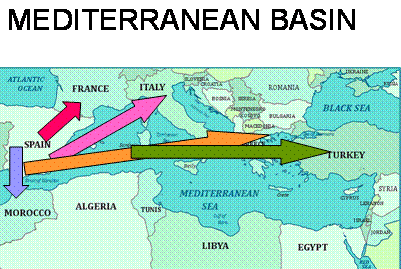
















SEPHARDIC MUSEUM
Foundation For Jewish Diversity
State of California Foundation -
#3114965
United States Government Federal I.D.
#EIN 94-3490306 501(c)3
1875 Century Park East, Ste 700,
Los Angeles, CA 90067
Tel 310 284 3133 Fax 310 284 3135
LAYING THE FOUNDATION
While the original idea was formulated over 20 years, only beginning in 2008 did the American-Israeli hsitorian on Sephardic and Eastern Jewry, Yitzchak Kerem, begin the organizational steps to establish an al encompassing Sepahrdic/Mizrachi (Eastern) mixed high-tech/conventional museum in Jerusalem,Israel. The second phase will be a public educational nter to teach the lost non-Ashkenazi Jewish langauges, and the third phase will to be ceate a guest cultural center to produce Sepahrdi/Mizrachi culture in twelve different disciplines.
The Israeli Non-Profit Organization
In 2010 the Israeli non-profit organization Habayit LeMoreshet Keniot Sefarad vehaMizrach (The Heritage House for Sephardic and Eastern Jewish Communities) was founded as a recognized tax-exempt (25%) Israeli public charitable institution.
The United States Foundation
In 2009 the Founation for Jewish Diversity was founded in Los Angeles in order to serve as the future financial backbone for a all-encompassing Sephardic and Mizrachi Museum and center for cretive production in the arts. Donors receive a 100% tax-exemption for the IRS, the U.S. tax authoriy.
What are the languages?
Judeo-Spanish (Ladino)
Judeo-Arabic
Judeo-Persian
Judeo-Greek
Judeo-Italian
Judeo-Malalayim (Cochin, India)
Judeo-Tat (Eastern Uzbekistan)
Who are the Sephardim and Mizrachim?
The Sephardic Jews originate from Spain and Portugal in the Iberian Peninsula, and the Mizrachi (Eastern) Jews come from numerous lands in North Africa, the Middle and the Near and Far east). The main groups amongst the latter come from Morocco, Syria, Babylonia (Iraq), Persia (Iran), and from other diverse places like Ethiopia, Yemen, and India.
Music
Sephardic music is Jewish panish usic emanating from pain , but developing in the Balkans under the Otoman Empire and in Spanish Morocco Eastern Jewish music is based on religious oetry (piyyutim, andother forms), influenced by a nmber of musical syles ranging from Andalucian to religious Muslim scales called makams, and contains also numerous forms for daily and Sabbath prayer, liturgical poems for the High Holidays (selichot), and its diversity can be classified by country from Morocco to Tunisia/Libya to Yemen on onward to Syria, Iraq, Pesian lands, and India. Non-Ashkenzi musical traditions also include ItlainB'naiRma and Judeo-Greek Roaniote traditions found in Greece , Aia Minor, and those who were under Byzantine rule.
Culture
Culture includes diverse disciplines like art (sculpture, painting, sketching, etc.), film, theater, music, dance, poetry, language, folklore, history, poetry, rabbinic tradition, and literature.

